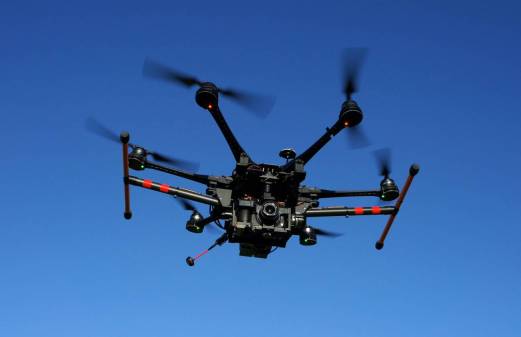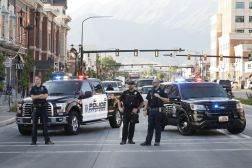Video wall delivers real-time information to dispatchers in Montgomery, Alabama

Dispatchers in Montgomery, Ala., received a brand new call center — complete with a video wall — to improve their situational awareness and communications.
Developments to the call center include a CineMassiveAlpha video wall system with live camera feeds, a new radio system, call mapping and ShotSpotter, a real-time gunshot detection system designed to show dispatchers the locations of shootings on a map. The dispatchers will also be able to interact with multiple tools at once on the video wall.
“The video wall provides everyone with a visual as to what’s going on throughout the city,” explained Larry Fisher, emergency communications director for the city. “If they have a call and they see that the call pops up in the exact same area as the surrounding calls, then they can tell that it could be associated. When a call pops up in a different area then they know it’s something different.”
These new adaptations came to the call room after Fisher noticed obstructions to the dispatchers’ workflows. Fisher said he found the workspaces to be isolating, with dispatchers only able to view their own monitors, but none of their team’s monitors. The lack of communication made it difficult for dispatchers to identify connections and patterns between calls. Dispatchers also lacked tools for tracking incident developments as they occurred.
“It helps get our officers more information as they’re responding to the calls, getting them prepared for what they’re going to experience when they get there,” said Maj. A.S. Tatum of the Montgomery Police Department. “Any additional information they can get will help them once they get on the scene, to better save lives and protect themselves, also.”
Among the call center’s technology upgrades, the approximately 20-by-6-foot video wall is integral because it ties everything together. To solve the communication issues dispatchers were facing, the city selected CineMassive as its vendor.
Fisher called CineMassive “the complete package.” He went on to say, “They had the video wall itself, they had the controlling system and software, and they had the ability to manipulate the data feeds on the screens.”
Now, the team’s shift commander and their supervisors can control the content displayed on the screens. The dispatchers face the screen as they scan for content and piece together patterns as they respond to calls.
City officials said they believe the new technology will save lives, according to a vendor press release, by enhancing dispatchers’ situational awareness and communications with first responders.
In the future, the city plans to continue its extension of the call center’s video wall across two environments. These two new divisions will be called the Emergency Management Agency (EMA) and the Director’s Crisis Center (DCC). Integration of the new divisions would enable real-time sharing between the three groups, furthering emergency response efforts and coordination.
Editor’s note: This article was updated on Oct. 12, 2016 to accurately reflect the size of the city’s video wall.






